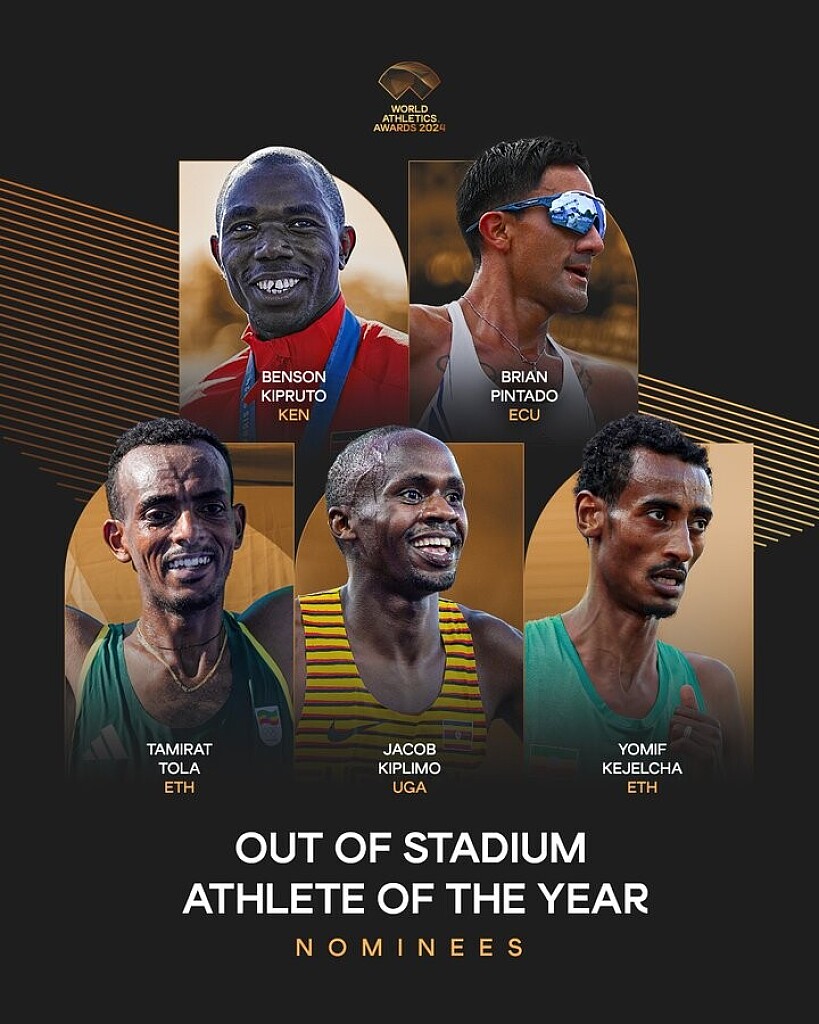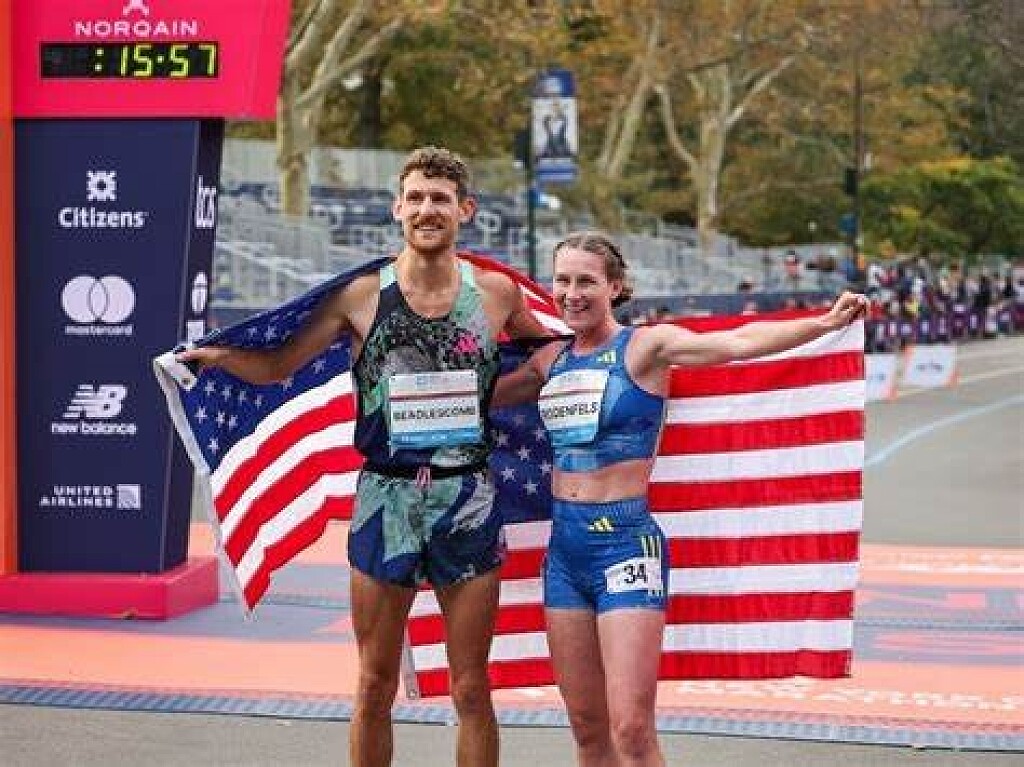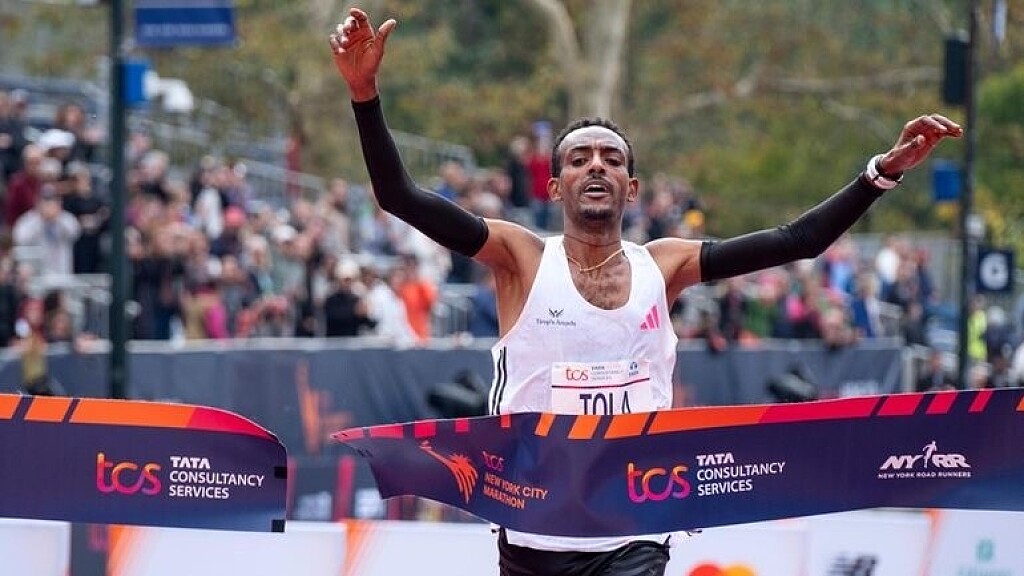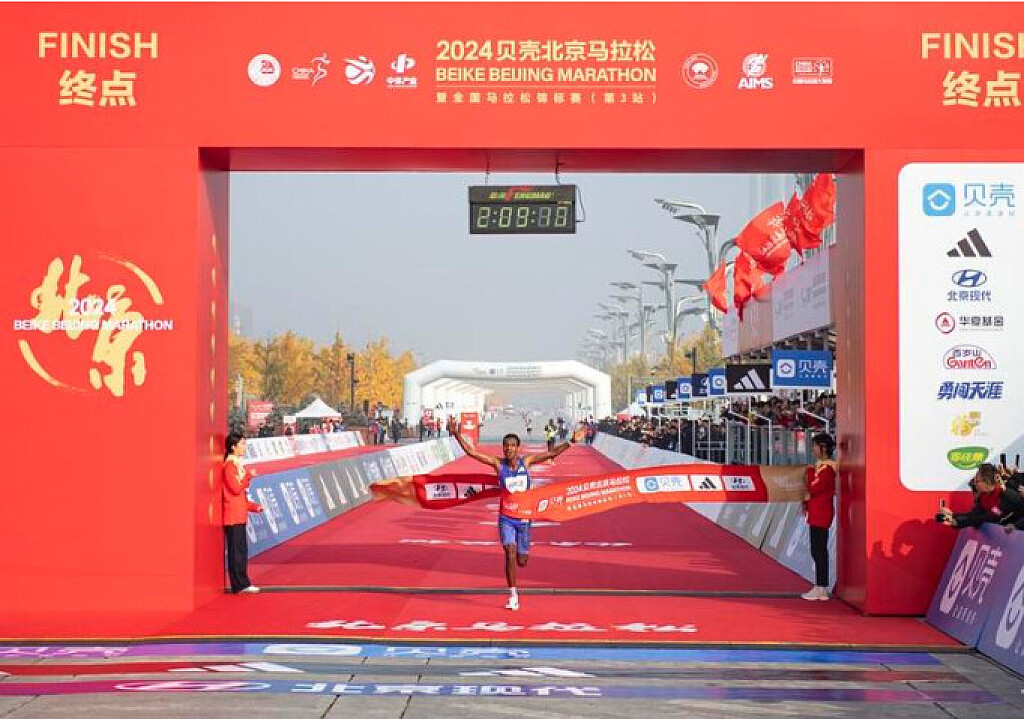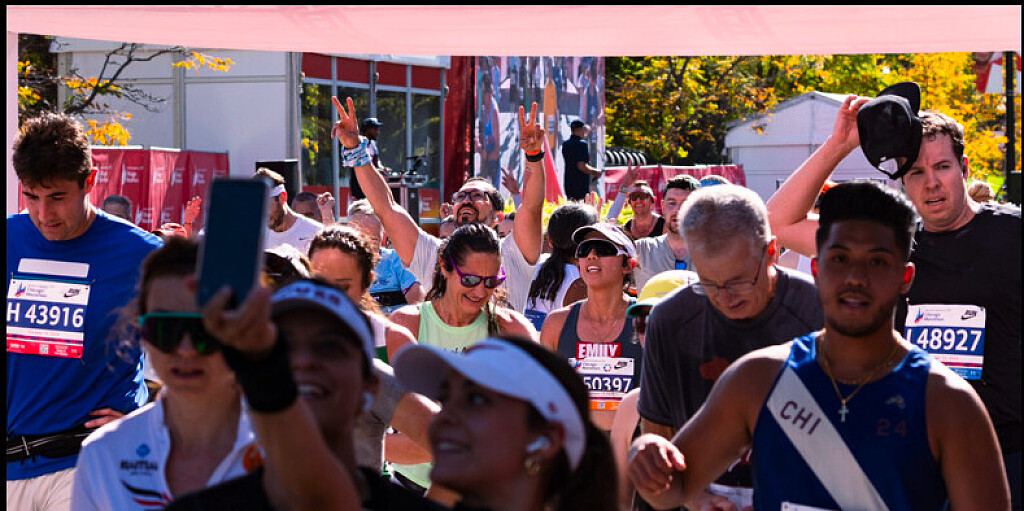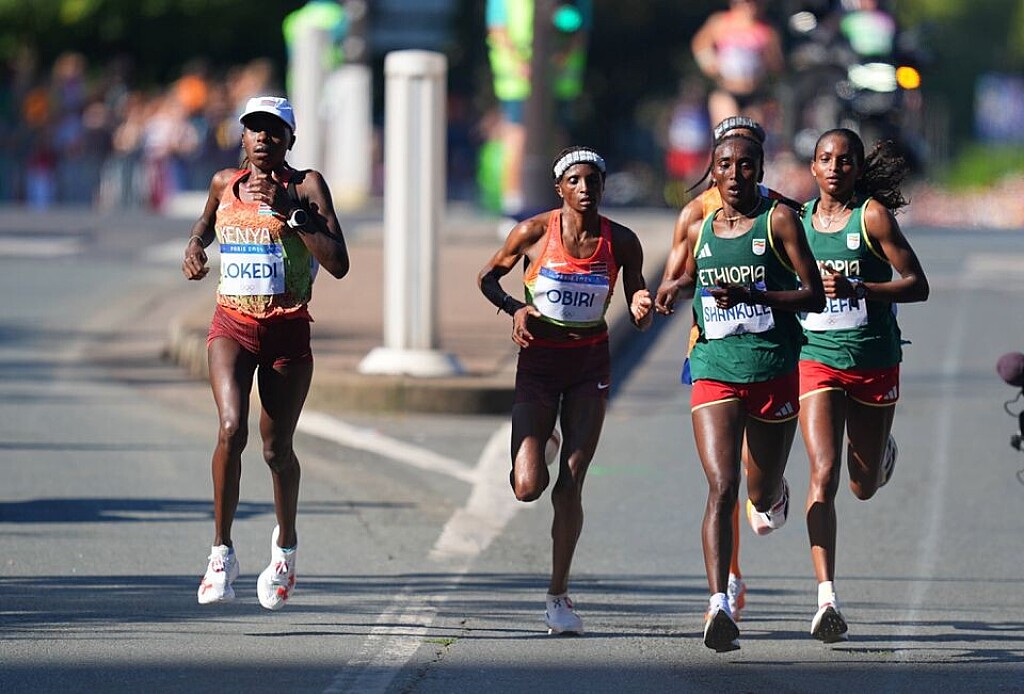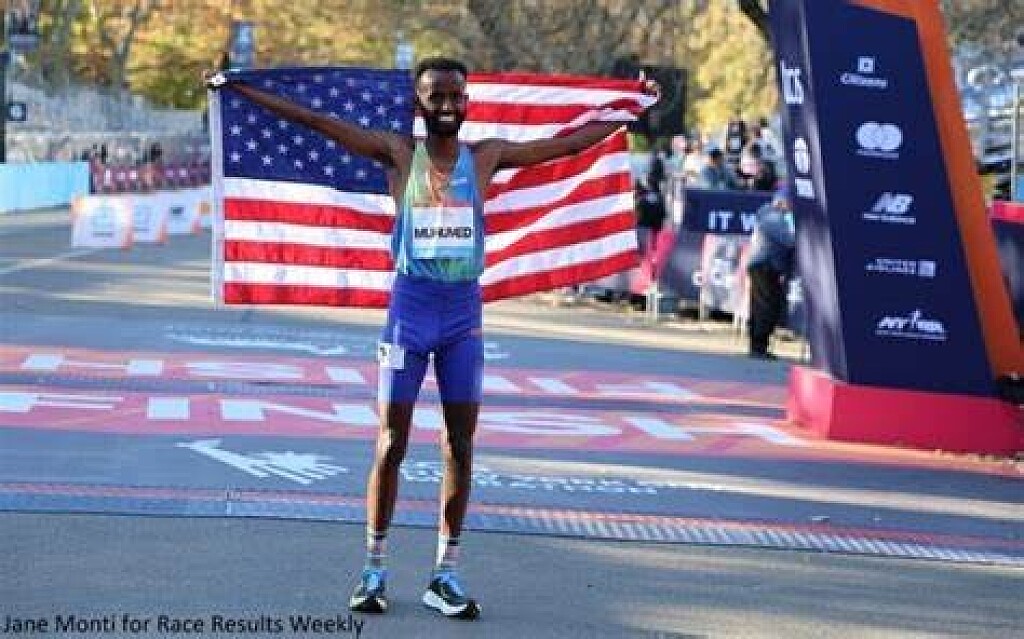Running News Daily
Top Ten Stories of the Week
11/9/2024
These are the top ten stories based on views over the last week.
Who will win 2024 Out of Stadium Athlete of the Year?
year filled with unforgettable moments in the sport, the nominations highlight remarkable performances from the Paris 2024 Olympic Games, the World Athletics Cross Country Championships, Label road races, and other global events.
World Athletics announced the nominees for the esteemed 2024 Track Athlete of the Year award last week. The list of 12 outstanding athletes features some of the biggest names in international athletics, each having left a significant mark on the season.
The nominees for 2024 Women’s Out of Stadium Athlete of the Year are:
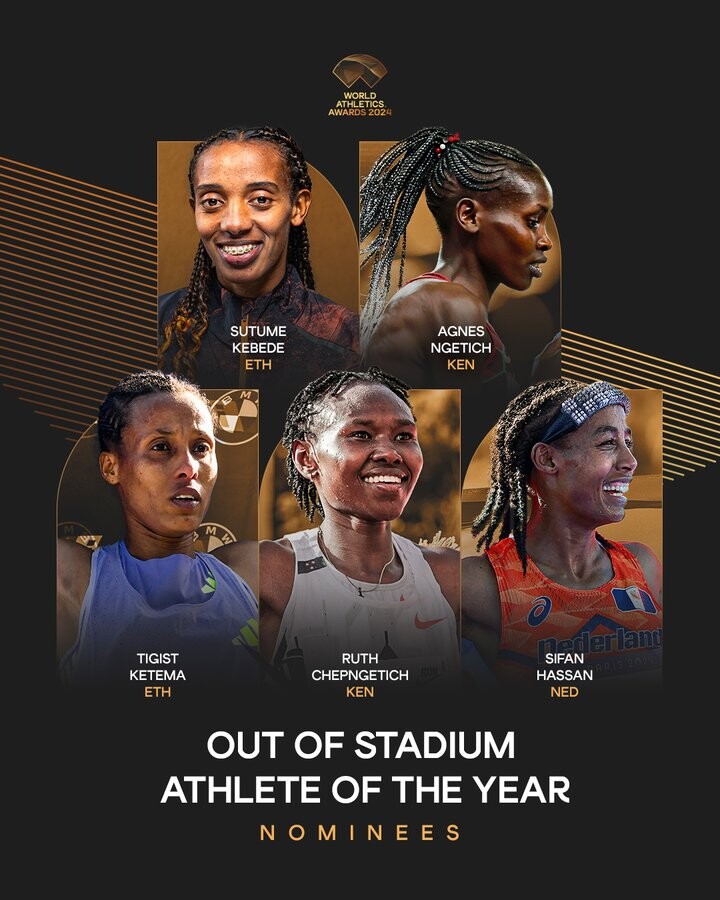
Sutume Asefa Kebede, Ethiopia
• Tokyo Marathon winner• No.2 marathon time of 2024
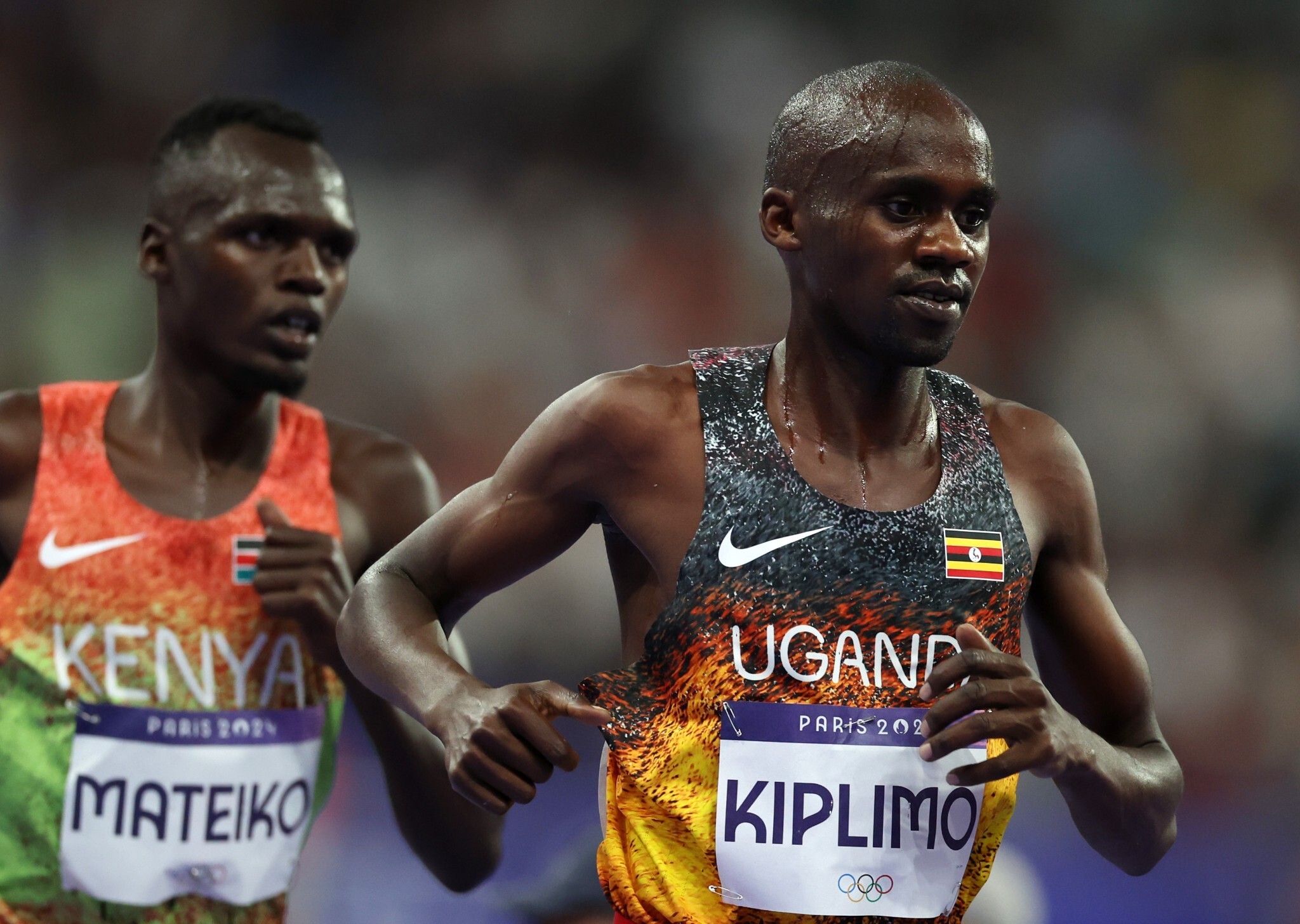
Sutume Asefa Kebede made waves this year with her victory at the Tokyo Marathon, clocking in at 2:15:55, the fastest marathon time of 2024, securing her place as the eighth-fastest woman in marathon history. Since her debut in 2016, Kebede has steadily risen through marathon ranks, often training alongside her husband and coach, Birhanu Mekonnen, whose support has been instrumental. Along with her Tokyo triumph, she delivered an exceptional performance at the Houston Half Marathon, winning in 1:04:37, a record-breaking time on US soil.
Ruth Chepngetich, Kenya
• World marathon record• Chicago Marathon winner
Ruth Chepngetich solidified her status as the world’s top marathoner by winning this year’s Chicago Marathon with a groundbreaking world record, becoming the first woman to break the 2:10 barrier with a time of 2:09:56. She also holds the world record for the half marathon and has consistently excelled in major marathons. Known for her bold, high-powered pacing, Chepngetich’s approach has led to multiple victories throughout her career, including previous wins in both Chicago and London.
Sifan Hassan, Netherlands
• Olympic marathon champion• Olympic record
Dutch runner Sifan Hassan’s victory in the Olympic marathon in Paris marked a pivotal achievement in her celebrated career, as she set a new Olympic record. Renowned for her versatility, Hassan has excelled across a range of distances, both on the track and road. Her transition from shorter track events—where she’s earned medals and set records—to marathon racing initially surprised many. However, she showcased her remarkable endurance and adaptability by winning not only at the Olympics but also in London and Chicago in 2023.
Tigist Ketema, Ethiopia
• Berlin Marathon winner• Dubai Marathon winner
Ketema had an exceptional year, claiming victories at both the 2024 Dubai Marathon and the 50th Berlin Marathon. In Dubai, she set a record for the fastest debut marathon by a woman with a time of 2:16:07, establishing herself as a standout among elite runners. Continuing her stellar performance in Berlin, Ketema crossed the finish line in 2:16:42, the third-fastest time in the event’s long history. Leading the women’s field from early on, she finished well ahead of her competition in Berlin.
Agnes Jebet Ngetich, Kenya
• World 5km and 10km records• World half marathon lead
Ngetich’s 2024 season has been outstanding across multiple distances. She set new world records in both the 5km (14:25) and 10km (29:24) road races, demonstrating impressive speed and endurance over varied distances. Additionally, she topped the global rankings in the half marathon this year, underscoring her versatility and dominance in road racing worldwide.
The nominees for 2024 Mens’s Out of Stadium Athlete of the Year are:
Yomif Kejelcha, Ethiopia• World half marathon record• World 10km lead
Yomif Kejelcha has captured attention in 2024 with an extraordinary season on the road. He set a new world record in the half marathon in Valencia, clocking an impressive 57:30, and continued to demonstrate his strength over longer distances. Known for his range, Kejelcha also recorded outstanding times in the 5km and 10km, including a remarkable 10km finish of 26:37 earlier this year in Laredo, Spain. These performances add to his accomplished career, which includes two World Indoor Championship titles and a Diamond League title, affirming his status among the elite in both track and road racing.
Jacob Kiplimo, Uganda• World Cross Country Championships gold• Valencia 10km winner
Ugandan distance star Jacob Kiplimo has consistently showcased his prowess in cross-country and road events. In 2024, he secured gold at the World Cross Country Championship, excelling against a formidable field and challenging conditions. His impressive season also included a victory in the 10km in Valencia, further adding to his accolades. Kiplimo’s performances in recent years have established him as one of the world’s leading long-distance runners, highlighted by his Olympic bronze medal and his world record in the half marathon, set in 2021.
Benson Kipruto, Kenya• Tokyo Marathon winner• Olympic marathon bronze
Ugandan distance star Jacob Kiplimo has continually demonstrated his skill in cross-country and road races. In 2024, he captured gold at the World Cross Country Championship, excelling in a competitive field and tough conditions. His remarkable season also featured a win in the 10km in Valencia, further enhancing his achievements. Kiplimo’s recent performances have solidified his position as one of the top long-distance runners in the world, marked by his Olympic bronze medal and his world record in the half marathon, established in 2021.
Brian Daniel Pintado, Ecuador• Olympic 20km race walk champion• Olympic marathon race walk mixed relay silver
Brian Pintado’s career soared to new heights in 2024 with his historic Olympic gold medal in the 20km race walk, bringing Ecuador into the spotlight. He further enhanced his accomplishments by helping Ecuador secure silver in the mixed relay marathon race walk. Pintado’s achievements this season have established him as a leading figure in the race-walking community, making him the only race walker among the nominees.
Tamirat Tola, Ethiopia• Olympic marathon champion• Olympic record
Tamirat Tola capped off his 2024 season with an Olympic marathon victory, during which he set a new Olympic record, solidifying his status as an elite long-distance runner. He has consistently ranked among the world’s best, having previously claimed the World Championships title in 2022 and achieving top times in various marathon circuits.
(11/01/24) Views: 119
Sam May
Defending champions Morgan Beadlescomb and Annie Rodenfels return to the Abbott Dash to the Finish Line 5k
New York City Marathon weekend kicks off with a much-anticipated USATF 5 km Championships at the Abbott Dash to the Finish Line 5k on Saturday, November 2, taking place the day before the 53rd running of the TCS New York City Marathon.
The USATF 5 km Championships at the Abbott Dash to the Finish Line 5k are the 11th stop on the 2024 USATF Running Circuit. Live coverage of this year’s championships will be broadcast on USATF.TV, starting at 8:20 a.m. ET, with the men’s race going off at 8:30 a.m. and the women starting five minutes after at 8:35 a.m.
Defending champions Morgan Beadlescomb and Annie Rodenfels return to the streets of Midtown Manhattan after winning last year’s USATF 5km Championships in their respective races.
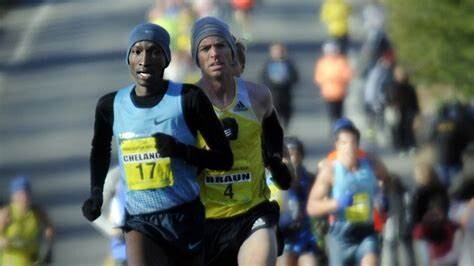
The former Michigan State Spartan Beadlescomb surged away from Ahmed Muhumed, Tai Dinger and Daniel Schaffer in the final stretch to win last year’s men’s title in 13:44, besting the field by a comfortable three seconds to claim his first USATF crown.
Looking to become the first men’s repeat champion since Ben True in 2011-12 when the USATF 5 km Championships were held in Providence, R.I., Beadlescomb will take on another tough field that will feature Muhumed (second), Schaffer (fourth) and Brian Barazza (fifth) from last year’s race, as well as a handful of others with impressive credentials.
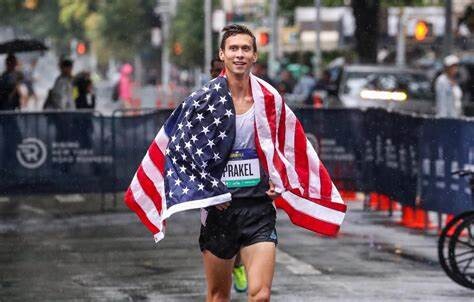
Beadlescomb could also become the first male athlete to win two USATF 5 km Championships titles at the Abbott Dash to the Finish Line 5k course, along with 2019 USATF 5 km champion Anthony Rotich making his way back into the field for the first time since winning the 2019 title.
Muhumed is the only competitor in the field that has won a USATF title this year on the USATF Running Circuit, winning the USATF 8 km Championships back in July in Kingsport, Tennessee. The USATF 8 km Championships were also the last time Muhumed raced this year.
Sam Chelanga, Sam Prakel and Josh Thompson join Beadlescomb, Rotich and Muhumed as three more USATF national champions set to race, bringing the total to six national champions in Saturday’s field.
Chelanga, a two-time USATF champion, will go after his first USATF national title since 2016 when he won the USATF 10 Mile title. He’s raced twice this season on the USATF Running Circuit, finishing third at the USATF 10 km Championships and fourth at the USATF 20 km Championships.
Prakel, the 2023 USATF Road Mile champion, and Thompson, the 2020 USATF Indoor 1500 champion, are both eyeing a second national title of their own.
Parlympian and New York native Michael Brannigan is slated to race after competing for the United States at the 2024 Paris Paralympic Games, where he came away with his second Parlympic medal in the men’s T20 1500, earning bronze to go with his 2016 gold from the Rio Games.
Derek Johnson, Titus Winder and Kirubel Erassa will be other names to watch out for in the men’s race.
Rodenfels earned her first USATF national title by defeating Rachel Smith by four seconds in last year’s women’s race, running 15:22.
Rodenfels has since won another USATF national title earlier this season, winning the 2024 USATF 6 km Championship race by 13 seconds on July 13 in Canton, Ohio.
With a win on Saturday, Rodenfels could join Weini Kelati as the only competitors to repeat as USATF 5 km champions at the Abbott Dash to the Finish Line 5k course and the sixth woman to complete consecutive national titles in the history of the USATF 5 km Championships.
Challenging Rodenfels will be Emma Grace Hurley, who will be racing in her seventh USATF Running Circuit race this year, with her latest effort being a third-place finish at the USATF 10 km Championships in Northport, New York, on September 21.
Hurley, who was ninth at last year’s USATF 5 km Championships, has finished as high as second place in two USATF Running Circuit races this year at the USATF 8 km Championships and the USATF Cross Country Championships.
Susanna Sullivan and Natosha Rogers are a pair of veterans coming off great races in their recent outings looking to mix it up in the top half of the field.
Sullivan completed this year’s Chicago Marathon as the top American, running a lifetime best of 2:21:56 to finish seventh overall, making her the 10th-fastest American marathoner in history.
Rogers won the Medtronic Twin Cities 10 Mile in St. Paul/Minneapolis, Minnesota, on October 6, in 52:29 just two weeks after finishing second at the USATF 10 km Championships.
Logan Jolly, Cailie Logue and Elena Hayday are other competitors entered in this year’s USATF 5 km Championships with past results on this year’s USATF Running Circuit.
2023 Cross Country champion Katie Wasserman adds some intrigue to the field, running in her first road race since 2022.
About the USATF Running Circuit
The USATF Running Circuit is a USATF road series featuring USATF championships from one mile through marathon and consistently attracts the best American distance runners with more than $500,000 awarded in total prize money. A total of $60,000 in prize money will be awarded at the USATF 5 km Championships.
The first ten U.S. runners earn points at each USATF Running Circuit race. For the USATF 5 km Championships, scoring is set as 15 for first, 12 for second, 10 for third, 7, 6, 5, 4, 3, 2, and 1, with those earning the most points receiving prize money at the end of the series.
The mission of the USATF Running Circuit is to showcase, support and promote U.S. runners. Since its inception in 1995, the USATF Running Circuit and its race have provided over $7 million to U.S. Distance runners.
(11/01/24) Views: 106Keenan Gray
Yes, You Can Train for a Marathon Running Just 3 Days Per Week
Take notes from experts and runners who have found success with just three runs a week.
Finishing a marathon is a bucket-list item for many runners, not to mention it can seriously boost your confidence and your fitness. But with work, family, and other obligations filling up your calendar, it can be difficult to fit marathon training into your schedule... unless you have a three-day-a-week marathon training plan that makes it easier to get prepped for the starting line.
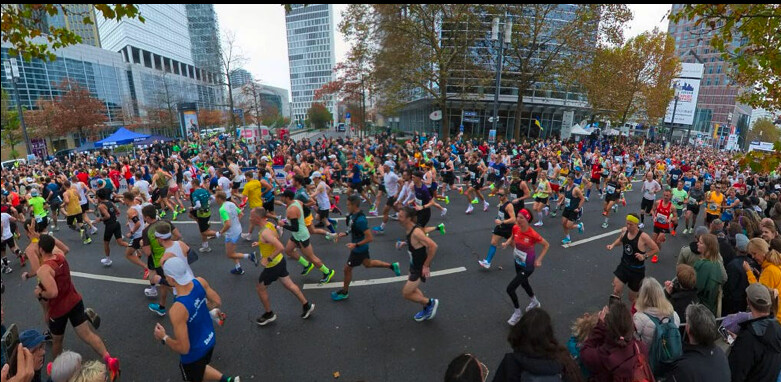
So before you write off marathon training as too time-consuming, consider this program for conquering your first or fastest 26.2. It’s the secret weapon for those of us who work odd shifts, have kids, travel often, or are injury-prone. No matter what stands in your way, your next PR is possible.
Does a 3-day-a-week marathon training plan actually work?
Yes! It turns out focusing on three key runs: a long run, a tempo run, and an interval workout each week with cross training in between provides you with all the opportunities to get faster, meet your mileage goals, and train injury-free. And research backs this up.
With a training plan backed by The Furman Institute of Running and Scientific Training (FIRST), any runner can conquer 26.2 miles by running just three days a week. Trust the three exercise science experts and avid runners who created this program about 20 years ago: Scott Murr, with a doctorate in exercise physiology, Bill Pierce, former chair of Furman’s Health and Exercise Science Department, and Furman exercise physiologist Ray Moss, Ph.D. (Murr currently teaches in the Health Science Department at Furman University in South Carolina, and has been for 25 years. Pierce and Moss have since retired.)
In 2005, these experts gathered eight women and nine men between the ages of 24 and 52 to test out the three-day-a-week plan for 16 weeks. The results showed that 12 out of the 14 runners who had previously run a marathon with alternative training plans set a new PR after the three-day-a-week marathon training plan.
The results suggest that training for a marathon with only three runs a week is not only possible, but could actually improve running performance and make you faster.
Almost two decades after creating this training plan, Murr and his former colleagues
You build a sustainable relationship with running
Life is all about balance, and running can naturally be part of the mix. But logging too many miles at once can lead to burnout, so it’s important to find other activities to supplement your marathon training.
Running three days each week provides you the freedom to enjoy other activities that you love on your days off from running, like cycling, lifting, or swimming.
It improves key performance metrics
Many runners swear by two training metrics to help them measure their improvement: VO2 max and lactate threshold. The three-day-a-week program can help you zero in on these metrics and improve them, making you a more efficient runner.
Your VO2 max is the measure of how efficiently your body takes in oxygen and converts it to energy for your muscles to use, according to Roberto Mandje, Olympian and senior advisor on engagement and coaching for New York Road Runners. The higher your VO2 max, the higher your endurance level, meaning you can run farther and longer, Mandje explains.
Your lactate threshold is the exercise intensity level you reach when lactate accumulates in the blood faster than you can remove it, leading
You’ll know if you’re meeting quality efforts by looking at your heart rate, paces, and/or RPE, so it may be helpful to keep a training log.
Heart rate is relatively easy to track, as most running watches give you an estimated heart rate, but keep in mind that your heart rate can be affected by temperature, hills, and hydration.
However, the most realistic way to monitor your progress, Murr says, is by tracking your pace. “If your 5K race time this weekend was faster than the 5K race you ran two months ago, that would indicate an improvement in running fitness,” he says.
Rate of perceived exertion (RPE) is also a reliable way to track progress, as it rates your effort on a scale of 1 to 10 with 10 being all-out. Murr explains that if you ran a five mile tempo run a month ago at a 8:15 pace and it felt like a 6 or 7, but running a five mile tempo at 8:15 pace now feels like a 5 or 6 on the same scale, you can be confident that your running fitness is progressing.
1. Interval Workout
Why it works: Intervals help
1. Swimming
Why it works: Swimming is a low-impact option for runners that can increase upper-body strength and endurance. Many runners struggle with ankle mobility, explains Murr, so the kicking in the pool can unlock some of that flexibility that you don’t typically get to achieve when you’re pounding the pavement.
How to do it: According to Murr, a reasonable goal for runners in the pool is to stay in the water for 30 minutes, doing as many laps as you can. But you can also mix in some harder efforts, like going for an RPE of 6 to 7 for two laps, with short rests in between of about 15 seconds, in order to up the intensity. Beginners don’t have to worry about intensity in the pool, Mandje says, and should instead focus on having the best form possible.
2. Cycling
Why it works: Mandje is a big fan of cycling for marathon runners, as it can be done outdoors or on an indoor trainer. He explains that cycling is non-weight bearing, low-impact exercise that’s easy on the joints. Cycling can also help reduce knee pain, according to a review and meta-analysis published in
Specific exercises that target running-specific movements include squats, step-ups, single-leg deadlifts, bent-over-rows, curl-to-press, bird dogs, clamshells, and single-leg glute bridges.
How many rest days should you take in a 3-day-a-week program?
Everyone should take at least one rest day a week, according to Mandje, even three-day-a-week runners. Rest days should consist of only light exercise, like walking, stretching, or yoga.
Murr recommends taking a rest day particularly before a long run to prepare for the high mileage you’ll tackle. But every runner is different. “For whichever key run a runner finds the most challenging, I would encourage them to take a rest day prior to that run so that they are rested,” he says.
Both Mandje and Murr agree that the three-day-a-week marathon training plan is based on the belief that runners should train hard, and recover harder, considering performance gains are made during the recovery period. “If you don't prioritize recovery, you're not going to make the gains,” says Mandje.
(11/02/24) Views: 101Netherlands runner wins the 2024 New York City marathon
It was a crisp, sunny morning on November 3, 2024, as runners gathered at the start line of the New York City Marathon, their breath visible in the chill air, yet their spirits high. The annual race had drawn over 50,000 participants from across the globe, each ready to challenge themselves across 26.2 miles through the city’s five boroughs. This year’s race was especially notable, with a lineup of world-class athletes and hopeful first-timers mingling together, all united by their love for running and their dedication to crossing that finish line in Central Park.
Among the crowd was Abdi Nageeye of the Netherlands, a seasoned marathoner who had been a runner-up in major events but was still chasing his first New York City Marathon victory. On the women’s side, Kenya’s Sheila Chepkirui stood out as a formidable contender, even though it was her New York debut. Both had trained for months, pushing their limits in preparation for this iconic race. In the wheelchair division, American favorites Daniel Romanchuk and Susannah Scaroni were also in attendance, their sights set on reclaiming titles and setting records.
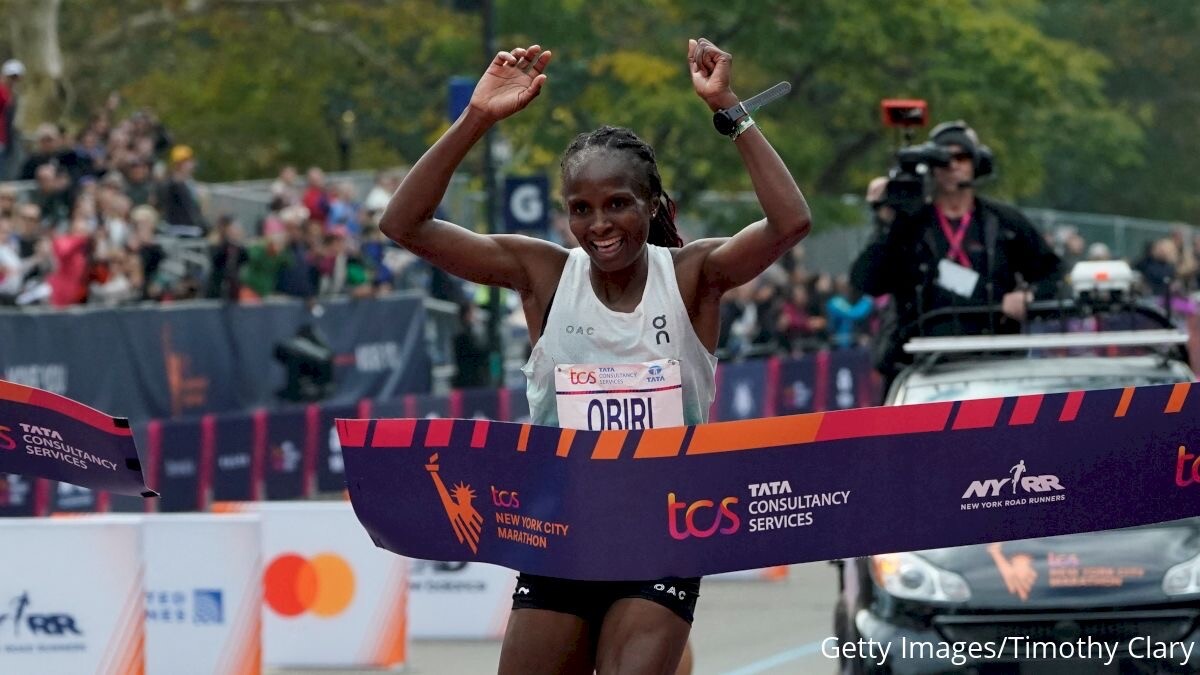
As the race began, the runners surged forward from the Staten Island start, quickly falling into a rhythm as they tackled the Verrazzano-Narrows Bridge. The marathon’s energy was palpable, with spectators lining the streets, cheering, waving flags, and holding up colorful signs of encouragement. Each borough had its own personality, adding to the unique feel of the race: Brooklyn’s lively bands, Queens’ family-friendly crowds, the Bronx’s upbeat energy, and finally, Manhattan’s skyscrapers looming above as runners approached the finish.
By mile 20, the pack had thinned, and the leaders emerged. Nageeye ran with focus and determination, his stride smooth and steady. He knew the competition was fierce, and every step had to count. Despite fatigue setting in, he drew strength from the cheering crowd and his own desire to win. When he finally approached Central Park, his energy surged with the knowledge that he was within reach of the finish line. He crossed in a remarkable time of 2 hours, 7 minutes, and 39 seconds, marking a career milestone and celebrating his first New York City Marathon victory. Cheers erupted, and he was embraced by his team as they celebrated his achievement.
Meanwhile, Sheila Chepkirui was making her own statement in the women’s division. Running with grace and speed, she navigated the final miles with a steady pace, her eyes fixed on the finish line. Despite being new to the course, she ran like a seasoned pro, crossing the line at 2 hours, 24 minutes, and 35 seconds. Her performance cemented her place as one of the top female marathoners in the world, and she was greeted with overwhelming applause from the crowd.
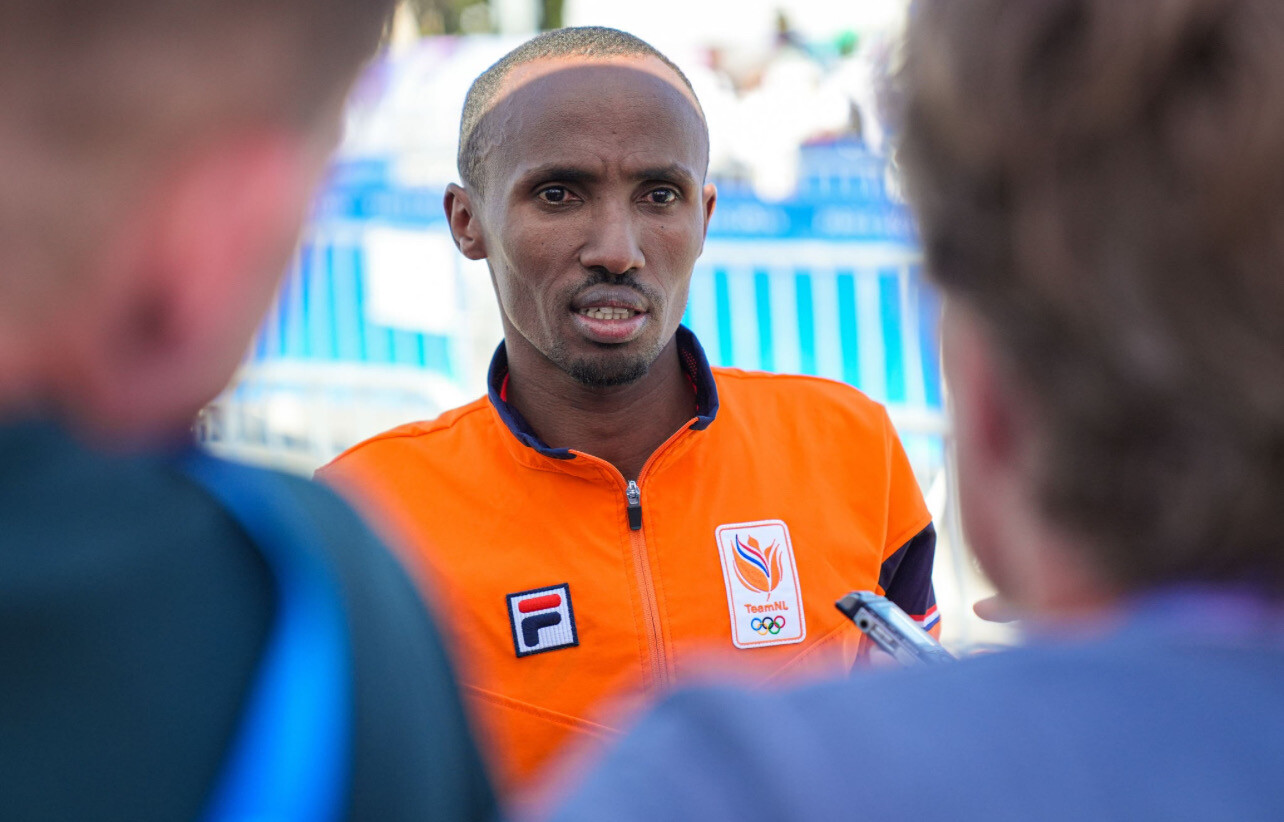
In the wheelchair division, Daniel Romanchuk and Susannah Scaroni did not disappoint. Romanchuk, finishing in 1 hour, 36 minutes, and 31 seconds, celebrated his third title, while Scaroni’s powerful finish at 1 hour, 48 minutes, and 5 seconds secured her second New York victory. Both athletes were a testament to perseverance and resilience, inspiring runners and spectators alike.
This year’s New York City Marathon was more than just a race; it was a celebration of human spirit, resilience, and unity. From elite athletes to recreational runners, each participant crossed the finish line carrying their own story of triumph and determination, etching another unforgettable chapter into the marathon’s history.
Men’s Elite Division:
1. Abdi Nageeye (Netherlands) – 2:07:39
2. Evans Chebet (Kenya) – 2:07:45
3. Albert Korir (Kenya) – 2:08:01
4. Tamirat Tola (Ethiopia) – 2:08:15
5. Bashir Abdi (Belgium) – 2:08:30
Women’s Elite Division:
1. Sheila Chepkirui (Kenya) – 2:24:35
2. Hellen Obiri (Kenya) – 2:24:50
3. Vivian Cheruiyot (Kenya) – 2:25:10
4. Sharon Lokedi (Kenya) – 2:25:25
5. Edna Kiplagat (Kenya) – 2:25:40
(11/03/24) Views: 101Ethiopian and Kenyan runners win titles at 2024 Beijing Marathon
BEIJING -- Ethiopia's Lemi Berhanu Hayle and Kenya's Vicoty Chepngeno claimed the men's and women's titles, respectively, at the 2024 Beijing Marathon on Sunday.
Hayle crossed the finish line first in 2 hours, 9 minutes and 16 seconds, just 14 seconds ahead of runner-up Bethwel Kibet Chumba of Kenya. Chinese runner Chen Tianyu finished third in 2:09:48.
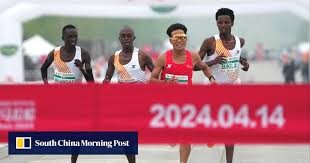
The women's race saw Chepngeno, who clocked 2:21:56, stand atop the podium, while Rahma Tusa of Ethiopia and another Kenyan runner Angela Jemesunde Tanui were in the second and third place, respectively.
In order to enhance the overall race experience for runners, the organizers moved the start line 100 meters north on the eastern side of Tiananmen Square for a more streamlined start this year.
The marathon route, which spans from Tiananmen Square to the Beijing Olympic Park, remains a favorite for runners worldwide. Despite a cap of 30,000 participants, a record 182,949 runners from 43 countries and regions applied within the first three days of registration last month.
(11/03/24) Views: 98Congrats, You Just Finished a Marathon! Here’s How Long to Rest and When to Return to Running
You deserve a break!It’s easy to forget when you’re in the midst of thousands of other runners, that no matter your pace or overall time, when you cross the finish line of a marathon, you just accomplished a monumental goal! A mere 0.13 percent of the U.S. population has conquered 26.2 miles, according to a 2023 report.
So first of all, you deserve (and need!) some rest time. Feel free to kick your legs up on the coach and relax for a few days, even weeks. How to Determine How Long to Rest After a Marathon
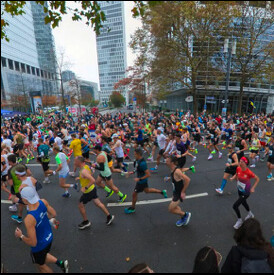
Exactly when you return to running after a marathon depends on how the race went (and your effort during it) and how you feel. Some experts recommend one day of recovery time for every mile raced—so 26 days of rest for marathoners. And some even recommend one day of rest for each kilometer raced, which would mean 42 days of recovery.
Don’t panic, though! The good news is that “rest” does not have to mean no running at all (though it can). It just means taking a break from high-intensity training like speed work or other races for about two to three weeks.
Remember, running a race at a sub-maximal effort is different than racing it at a high effort. But either way, there’s no exact formula to follow for recovery after a marathon, so the best guide is really tuning in and listening to your body.
At a minimum, take three to seven days completely off from running after a marathon. Sleep in, eat, and enjoy your accomplishment. After that, begin an active recovery program. Active recovery includes light exercise and can include some running, ifYou could also monitor your resting heart rate (RHR) for an objective assessment of your recovery process or your heart rate variability (HRV), which many fitness trackers take into account when determining your “readiness” to exercise. When your heart returns to its normal pre-marathon resting heart rate, and/or your HRV stabilizes, you are ready to begin running again.
What to Do to Recover Before You Get Back to Running
Walking, riding a bike, stretching, or swimming for 30 to 60 minutes at low intensity will promote circulation and assist your recovery. Massage therapy and foam rolling can also help relieve muscle soreness and assist recovery by increasing the body’s circulation.
Avoid a hot bath or the hot tub for 48 hours after the race. Cool water baths with some ice can help minimize soft tissue inflammation, though, during the first 48 hours postrace.
To make it more bearable, fill the tub with water and hop in. Then, slowly add ice to the water to minimize the cold shock factor. You can wear a sweatshirt and sip on a hot drink while you cool down your legs.
After your ice bath, plan on lying down with your feet elevated
(11/02/24) Views: 97How Long Does It Take the Average Person to Walk 10,000 Steps?
All you need to know about setting aside time to meet this common goal.
Your fitness tracker probably tells you how many steps you take most days. And your device likely sets the goal of 10,000 steps a day or maybe that’s what you’ve entered as your daily step-count target. This number has become the popular goal for many people and for good reason: Moving more throughout the day is good for your body in numerous ways and it supports your mind, too.
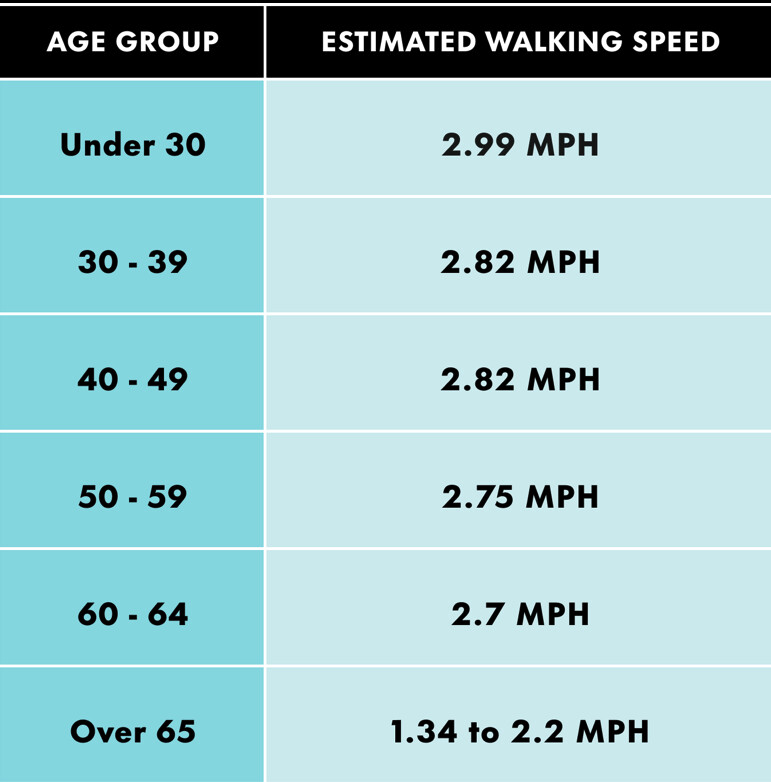
In fact, every 1,000 steps a person takes each day lowers their systolic blood pressure (the top number) by about 0.45 points—that’s a good thing, especially for your heart! The more you move, the more likely you are to lower your risk of chronic illness, like cardiovascular disease, and support your mental health.
Now, if you’re wondering how long it takes to walk 10,000 steps so you actually meet this goal, we got you! Here, two exercise physiologists explain how long it typically takes to cover 10,000 steps, depending on your average pace, so you can carve out time for your body and mind to clock more movement.
How long does it take to walk 10,000 steps?
For a person of average height (5-foot-3-inches for women and 5-foot-9-inches for men), a 2,000-step walk is about a mile, according to Laura A. Richardson, Ph.D., a clinical exercise physiologist and clinical associate professor at the University of Michigan School of Kinesiology.
This step count varies depending on the length of someone’s leg and the length of their stride, as well as their cadence. However, say it takes you 2,000 steps to cover one mile, and you walk at an average pace of about 20 minutes per mile, then it would take you about 100 minutes to walk 10,000 steps, Richardson explains Runner’s World. That’s one hour and 40 minutes.
Authors of a 2020 article published in Sustainability reviewed studies that examined walking habits in order to suggest ways to increase activity, and they came to a similar conclusion on timing. They found that healthy older adults typically average 100 steps per minute when moving at a moderate pace. This translates to about 100 minutes to clock 10,000 steps.
This will obviously change depending on your walking pace, though. If you walk a 15
The numbers change, of course, if you run some of those 10,000 steps, explains Rachelle Reed, Ph.D., an exercise physiologist, tells Runner’s World. Based on Strava, the average mile pace for American men is a 9:32 and 10:37 for American women. It would take those men about 47 minutes to take 10,000 steps and the women would need about 53 minutes to do the same.
How many calories do you burn per 10,000 steps?
To figure out how many calories you burn walking 10,000 steps, you need to know the metabolic equivalent rate (MET) for your exact pace. A MET is determined by multiplying the body’s oxygen consumption by bodyweight every minute. One MET is roughly equal to the amount of oxygen you consume at rest and is also equal to one calorie.
Following that equation, the National Academy of Sports Medicine says walking at a less than two miles per hour is equivalent to 2 METs per minute, which means someone who weights 150 pounds burns fewer than 140 calories per hour. Meanwhile, that same person walking at a brisk pace of approximately 3.5 miles per hour is equivalent to 4.5 METs, leading to a calorie burn of about 306 per hour.
Walking at a very brisk pace of four to six miles per hour is roughly equivalent to 5 METs, per the NASM. “It’s five times the amount of energy you need compared to rest,” Reed adds. Thus, you can burn around 340 calories per hour.
To put that in the context of 10,000 steps: Let’s say you walk about three miles per
How can you boost the benefits of your 10,000 steps?
To truly kick up the calorie burn, you have to change the intensity of your movement, which might mean adding in some running, walking at an incline on the treadmill, or walking up a hill, according to Richardson.
Reed suggests adding a weighted vest to your walks (or runs) a.k.a. rucking to increase the intensity level.
Finally, you may wonder if getting those steps on the treadmill is as beneficial as heading outside. There are pros and cons to both. “Pros of a treadmill are it’s easier to manipulate,” Reed says. “You can have complete control over the length of the intervals, the speed, and the incline much more easily there. But there’s also something to be said about getting your physical activity outside. There are additional mental benefits like stress relief and feeling more connected with your environment that people can gain from being active outside.”
Richardson agrees: “The nice thing about being outdoors is the sunlight, the fresh air, the different level terrain, depending on what type of surface someone’s walking on, that can engage different muscles,” she says. “So again, pros and cons to both. Really, choose
(11/02/24) Views: 96Sharon Lokedi relishing competition from Helen Obiri ahead of New York Marathon showdown
Former New York City Marathon champion Sharon Lokedi is looking to get one over fellow Kenyan Hellen Obiri at the 53rd edition of the New York City Marathon on Sunday November 3.
The 2022 New York City Marathon champion, Sharon Lokedi, is preparing for an intense rematch with fellow Kenyan star Hellen Obiri at the 53rd edition of the marathon, scheduled for Sunday, November 3.
Lokedi, who has grown accustomed to facing off with Obiri on the world stage, embraces the competition that brings out the best in her, particularly as she aims to reclaim the title.
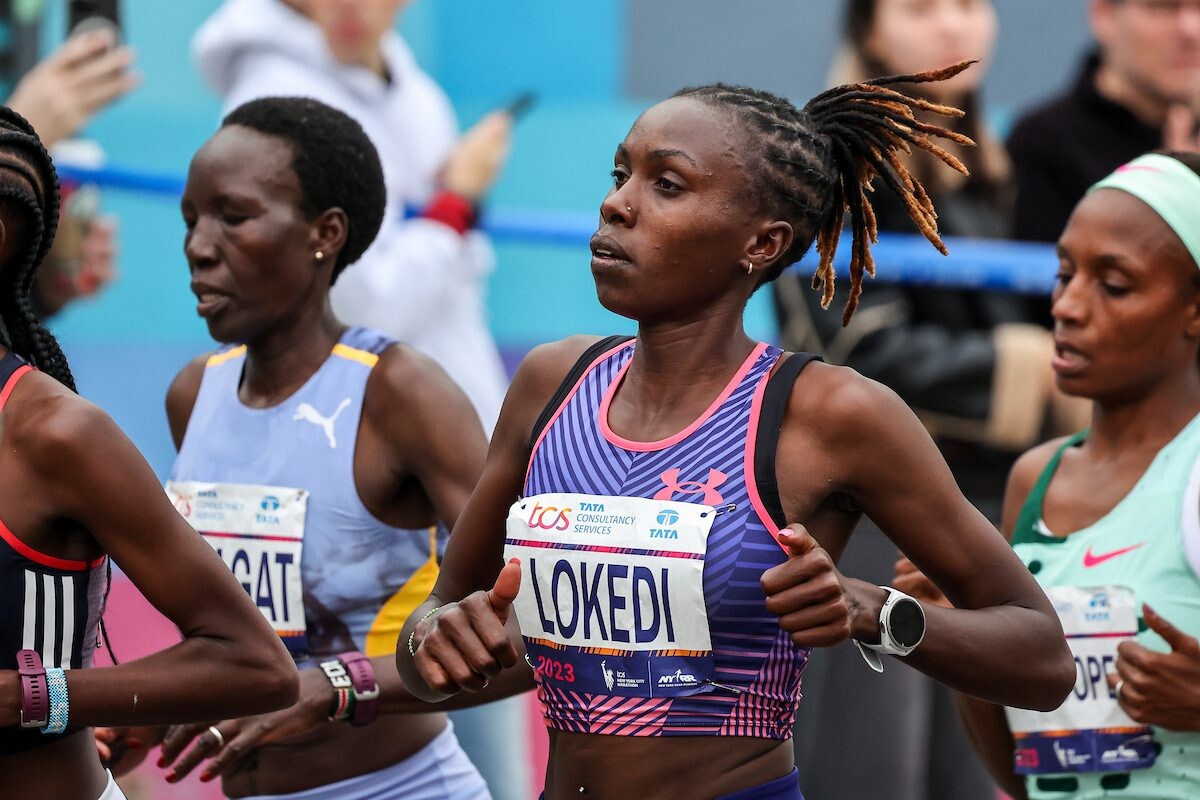
"Honestly, you see her, and it’s like one of those things where we’re competitors, and you can sense the tension,” Lokedi admitted via Citius Mag.
“But we’re all just talking, trying to avoid it, which is pretty funny," she added.
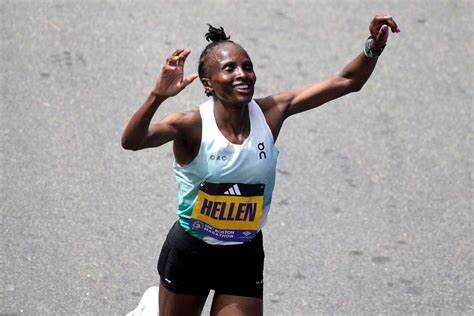
This friendly rivalry between Lokedi and Obiri has become a defining aspect of their careers.
Their last head-to-head battle came at the Paris Olympics, where Lokedi finished fourth with a time of 2:23:14, just four seconds behind Obiri, who claimed bronze in 2:23:10.
That close finish has fuels Lokedi’s determination to turn the tables in New York.
“But I love being with her. She’s a really good competitor, and you know, she wins all the time, but I hope this time it’s going to be different,” Lokedi shared.
“The competition is still very tough, so it’s not going to be easy. It might be something different from what we’ve seen, so we’ll see.”
As Lokedi and Obiri prepare to take on New York’s challenging course, all eyes will be on the rivalry that has become a thrilling storyline in the world of marathon running.
The Kenyan pair’s battle for dominance on Sunday promises to be a spectacle as both athletes push to etch their names into the city’s marathon history.
(11/01/24) Views: 94Stephen Awino
2024 USATF 5K: Ahmed Muhumed And Annie Rodenfels Win
Annie Rodenfels went back-to-back while Ahmed Muhumed claimed his second US title of the year at the 2024 USATF 5K Road Championships on Saturday morning in Central Park. Rodenfels, who runs for the B.A.A. High Performance Team, broke away from Emily Venters and Emma Grace Hurley in the final mile to win in 15:20.
Muhumed, who won the US 8k road title in July and was the runner-up here last year, dropped the field with a hard move at 2 miles and held off a late charge from Sam Prakel to win in 13:38 to Prakel’s 13:39.
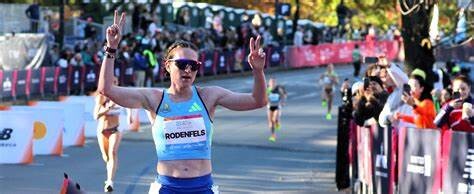
Top 10 results
Men
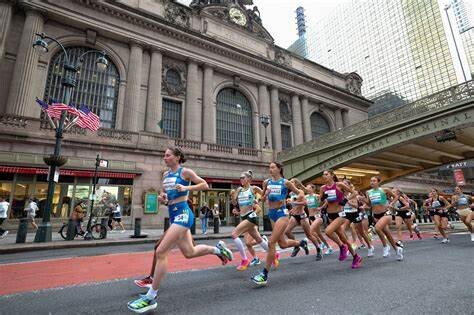
1. Ahmed Muhumed, HOKA NAZ Elite 13:38
2. Sam Prakel, adidas 13:39
3. Brian Barraza, Roots Running Project 13:42
4. Kirubel Erassa, unattached 13:44
5. Hillary Bor, HOKA One One 13:45
6. Anthony Rotich, US Army 13:48
7. Drew Bosley, unattached 13:49
8. Afewerki Zeru, McKirdy Trained 13:52
9. Abbabiya Simbassa, Under Armour 13:57
10. Morgan Beadlescomb, adidas 13:59
Women
1. Annie Rodenfels, B.A.A. 15:20
2. Emily Venters, Nike 15:25
3. Emma Grace Hurley, Asics 15:31
4. Bailey Hertenstein, Nike 15:32
5. Susanna Sullivan, Brooks 15:36
6. Abby Nichols, HOKA NAZ Elite 15:41
7. Paige Wood, HOKA NAZ Elite 15:41
8. Taylor Roe, Puma 15:43
9. Natosha Rogers, Puma 15:45
10. Molly Born, Puma 15:47
(11/04/24) Views: 93Jonathan Gault
Sydney Marathon joins Abbott World Marathon Majors, becoming first new addition in over a decade
The Sydney Marathon has been added as the seventh Abbott World Marathon Major, marking it as the first new addition since Tokyo in 2013 and promising to elevate global recognition and participation in Australian marathon running.
The Sydney Marathon has been added to the list of Abbott World Marathon Majors, becoming the first city to join the prestigious lineup since Tokyo 11 years ago.
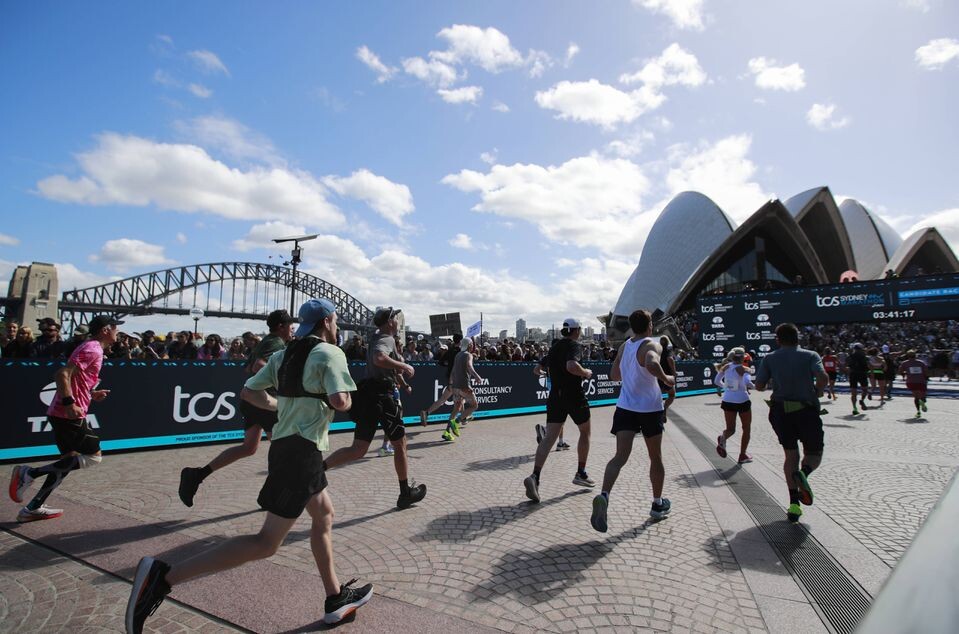
Sydney started the bid some years back but the organisers of the marathon and the city had to go through certain processes and make changes to join the other six majors. They include the London Marathon, Boston, Chicago, New York, Berlin and Tokyo Marathons.
In Oceania, the Sydney Marathon is the largest race over the 42km distance. The marathon also registered record numbers, 20,272, at this year’s edition of the event. Next year’s event will be held on August 31 and the marathon will be hosted as a World Marathon Major, attracting world-class athletes and gaining enough recognition.

Abbott World Marathon Major CEO Dawna Stone expressed his excitement following the addition of the Sydney Marathon to the list. He disclosed that the relevant stakeholders have been working around the clock and they for sure deserve such recognition.
“I am thrilled that Sydney will become the seventh Abbott World Marathon Major. The team in Sydney has been working towards this day, every day, for more than three years, and to see the improvement in their operations and event experience to the point where we can now call them a major has been deeply impressive,” said Abbott WMM CEO Dawna Stone.
“We cannot wait to see our community embrace this race as a Major and start planning their visits to run the streets of one of the finest cities in the world. Runners, your Sydney star awaits.”
The current six-star medal will remain for those striving to complete the original races but later on, there could be a nine-star medal, with two other marathons looking to become World Marathon Majors races.
“Becoming the seventh Abbott World Marathon is just incredible for the event, the city of Sydney and the State of New South Wales. We could not have achieved the incredible growth and uplift in delivery to make it into the Majors if it wasn’t for the support of the NSW Government and Destination NSW plus our key partners TCS and ASICS,” said Wayne Larden, race director of the Sydney Marathon.
“Our team is rated and has put in so much work to make this happen. It is really special for all of us. This amazing milestone is going to have a profound impact on running in Australia, inspiring the community to become marathoners and do something special for themselves, their families and friends. Community health will benefit alongside a huge increase in fundraising.”
(11/04/24) Views: 90Abigael Wafula


